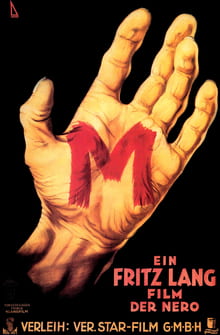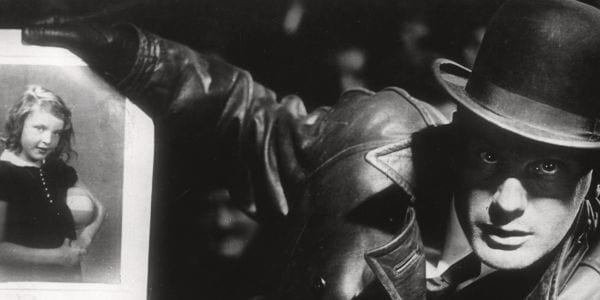
“M” (1931) promotional poster
Fritz Lang’s 1931 film “M” was one of my favorites from this semester. This film is a murder mystery and then some, as the story follows a mysterious child killer and the ensuing panic in the town that it takes place in. Lang’s storytelling approach with this film is unique because he presents the audience with this scenario and shows us both sides of the story – first, we see grieving mothers and terrified townspeople, then, the murderer is given a chance to speak for himself and reveals his remorse, explaining that it is a mental illness that compels him to kill. The film ends just before a verdict is given on whether or not the murderer must pay for his crimes.
By constructing the story in this way, Lang skillfully forces the audience to examine their own, individual moral codes as we decide who to side with in this situation. Do we sympathize with the murdered children and their families, or do we sympathize with a tormented killer suffering from mental illness? At what point is a person suffering from mental illness responsible for their actions? Should a person be killed as punishment for killing others? The film ends just before these questions are answered for us, forcing us to draw our own conclusions about ourselves, humanity, and society.
Another technical aspect of this film that is interesting is its use of sound. This film was created shortly after the transition to sound films, or talkies, and as a result, there are a number of sonic themes used throughout the film. One example of this is the recurrence of disembodied sounds, such as children singing outside or people approaching or talking outside of the frame. Another example is the theme of clocks and clock sounds, such as the ring of the cuckoo clock, used to indicate time passing as well as to display the technical mastery of synchronous sound.
Alongside the use of sonic themes such as these is an absence of background noise or music in the manner that we are accustomed to with modern films. There is little to no music throughout the entirety of the film, which did not necessarily impact the film negatively, but by today’s standards could be viewed as a missed opportunity to add more drama and suspense to certain scenes. One example of this is during the police raid of the criminal district. In this scene, we see a number of police officers storming into a quiet neighborhood in order to search for the killer in question. This scene is completely silent – though we see officers storming in, we do not hear their footsteps or voices, nor the reactions of anyone present in the neighborhood, nor any music to ground our emotional response to the scene. This was one of few instances where I felt that the lack of sound did break the immersion of the film, even if it was done intentionally. Even so, it is very interesting as a student of cinema to see how the art of sound was perfected as cinema progressed.

Have you seen this girl?
